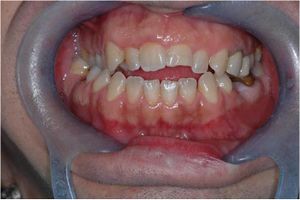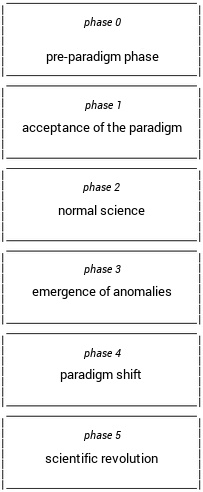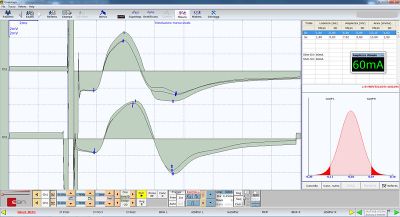Draft:Introduction - it
| Other languages: |
Vorremmo che il lettore avesse immediata percezione degli argomenti che verranno trattati in Masticationpedia, passando in rassegna alcuni dei temi più attuali che riguardano l'evoluzione epistemologica della Scienza in generale, quella medica ed odontoiatrica in particolare...
In questa fase prenderemo in considerazione i due aspetti fondamentali del Progresso della Scienza, secondo i Paradigmi di Kuhn, e la Epistemologia, che mette in discussione (o per lo meno in allerta) i concetti di "Inferenza Statistica" e di "Interdisciplinarità".
Questi due temi, che apparentemente sembrano in conflitto tra loro, in quanto il primo necessita di disciplinarità per evidenziare le "Anomalie nel Paradigma" ed il secondo di "Interdisciplinarità", si integreranno attraverso un elemento risolutore che consiste negli "Scaffold metacognitivi", ponti cognitivi tra discipline specialistiche. Il lettore, dunque, potrà meglio apprezzare, in questo contesto, l'approccio stocastico verso uno dei temi più dibattuti nelle riabilitazioni masticatorie come la "Malocclusione", da cui derivano gran parte delle procedure riabilitative masticatorie come l'ortodonzia, la protesi e la chirurgia ortognatica.
In chiusura, perciò, oltre ad anticipare l'aspetto filosofico scientifico di Masticationpedia, ci soffermeremo su argomenti come i "Sistemi Complessi", il "Comportamento Emergente" dei Sistemi Complessi e la "Coerenza di Sistema": passaggi necessari per introdurre argomenti scientifico clinici che portano con se una serie di dubbi, quesiti e contestualmente innovazioni paradigmatiche tendenti a cambiare lo status quo della routine di pensiero clinico deterministico e riduzionista, a fronte di una logica di linguaggio stocastico ed interdisciplinare.
Ab ovo[1]
Prima di entrare nel vivo della trattazione Masticationpedia, è opportuna una premessa, che riguarda principalmente due aspetti della realtà sociale, scientifica e clinica dell'era attuale e dell'era immediatamente precedente.
Nel secolo scorso si è assistito a una crescita esponenziale di "Innovazioni" tecnologiche e metodologiche in particolare in odontoiatria;[2] queste innovazioni hanno in qualche modo influenzato strategie decisionali, opinioni, scuole di pensiero e assiomi al fine di migliorare la qualità della vita, come affermato nella "Scienza dell'esposizione nel 21° secolo".[3] Tuttavia, questa crescita esponenziale porta con sé, implicitamente, aree grigie concettuali (in termini pratici "effetti collaterali") talvolta sottovalutate, ma che possono mettere in discussione alcune Certezze Scientifiche o renderle meno assolute e più probabilistiche.[4] I due aspetti sensibili dell'attuale realtà sociale, scientifica e clinica (che sembrano in conflitto tra loro, ma come vedremo alla fine di questa lettura saranno complementari) sono il "Progresso della scienza" secondo Kuhn e il " Epistemologia".
Progress of Science according to Thomas Kuhn
Thomas Kuhn nella sua opera più famosa afferma che la scienza attraversa ciclicamente alcune fasi indicative del suo funzionamento.[5][6]
Secondo Kuhn, la scienza è paradigmatica e la demarcazione tra scienza e pseudoscienza può essere fatta risalire all'esistenza di un paradigma. L'evoluzione del progresso scientifico è assimilata a una curva continua che subisce discontinuità nei cambiamenti di paradigma.
Da buon risolutore di problemi, lo scienziato cerca di risolvere queste anomalie.
Le fasi di Kuhn in Odontoiatria
Kuhn, invece, divide l'evoluzione di un paradigma in cinque fasi; questo è un processo fondamentale per Masticationpedia, ma per restare sintonizzati con il progetto ci limiteremo a descrivere le tre fasi più significative condivise nel progetto ed indicate nell'indice del libro:
| |
| |
|
È quasi ovvio che la filosofia scientifica kuhniana preferisce la disciplina, poiché un'anomalia nel paradigma genomico sarà notata meglio da un genetista che da un neurofisiologo. Ora questo concetto sembrerebbe in contrasto con l'evoluzione epistemologica della Scienza, quindi è meglio soffermarci un minuto su di esso in dettaglio.
Epistemologia
| Il cigno nero simboleggia uno dei problemi storici dell'epistemologia: se tutti i cigni che abbiamo visto finora sono bianchi, possiamo decidere che tutti i cigni sono bianchi?Davvero? | |
| Kuhn ha usato l'illusione ottica per dimostrare come un cambio di paradigma possa indurre una persona a vedere le stesse informazioni in un modo completamente diverso: quale animale è quello qui a parte?Sicuro? |
L'epistemologia (dal greco ἐπιστήμη, epistème, "certa conoscenza" o "scienza", e λόγος, logos, "discorso") è quella branca della filosofia che si occupa delle condizioni in cui si può ottenere la conoscenza scientifica e dei metodi per raggiungerla conoscenza.[7] Il termine indica specificamente quella parte della gnoseologia che studia i fondamenti, la validità ei limiti della conoscenza scientifica. Nei paesi di lingua inglese, il concetto di epistemologia è invece utilizzato principalmente come sinonimo di gnoseologia o teoria della conoscenza, la disciplina che si occupa dello studio della conoscenza.
Per inciso, il problema fondamentale dell'epistemologia oggi, come ai tempi di Hume, rimane quello della verificabilità.[8][9]
Il paradosso di Hempel ci dice che ogni cigno bianco[10] avvistato conferma che i corvi sono neri; cioè ogni esempio non in contrasto con la teoria ne conferma una parte
Secondo l'obiezione di falsificabilità, invece, nessuna teoria è mai vera perché, mentre ci sono solo un numero finito di esperimenti a favore, esiste anche teoricamente un numero infinito che potrebbe falsificarla.[11]
|
Ma non è tutto così ovvio... |
...perché il concetto stesso di epistemologia incontra continue implementazioni, come in medicina:
|
|
P-value vs Interdisciplinarità
Alla luce di quanto sopra, ad una visione superficiale dell'evoluzione epistemica della Scienza, i due aspetti della disciplinarietà ("Paradigma della Fisica della Scienza", evidenziando l'anomalia) e Interdisciplinare ("Paradigma ingegneristico della Scienza", scaffold metacognitivo), potrebbero sembrare essere in conflitto tra loro; in realtà, però, come vedremo solo in questo capitolo, sono due facce della stessa medaglia perché entrambe tendono a generare “Innovazione Paradigmatica” senza alcun conflitto.
Ora potremmo concludere che le "Innovazioni" sono già di per sé "Progressi della scienza", come affermato nell'articolo "Basi scientifiche dell'odontoiatria" di Yegane Guven, in cui si considera l'effetto delle rivoluzioni biologiche e digitali sull'educazione odontoiatrica e quotidiana pratica clinica, come l'odontoiatria rigenerativa personalizzata, le nanotecnologie, le simulazioni di realtà virtuale, le informazioni genomiche e gli studi sulle cellule staminali.[21] Le innovazioni citate da Guven sono ovviamente da considerarsi di natura tecnologica e metodologica; tuttavia, il Progresso della Scienza non va avanti con questo tipo di Innovazioni, che sono chiamate "Innovazioni Incrementali" e "Innovazioni Radicali", ma avviene sostanzialmente attraverso "Innovazioni Paradigmatiche".
Nel senso più stretto della frase, le "Innovazioni Paradigmatiche" sono essenzialmente un cambiamento di pensiero e di consapevolezza che pervade l'intera umanità, a partire dai diversi strati sociali, dalla rivoluzione scientifica copernicana all'attuale tendenza di approccio stocastico al fenomeno biologico.[22]
In questo contesto epistemologico (oltre ad altre iniziative quali i Criteri Diagnostici di Ricerca nell'ambito dei Disturbi Temporomandibolari — RDC/DTM), dell'Evidence Based Medicine (e altro), si inserisce il progetto Masticationpedia per mettere in luce le dialettiche dinamismo sui progressi della scienza della riabilitazione masticatoria. Masticationpedia tende, inoltre, ad evidenziare le anomalie che inevitabilmente stimolano un cambiamento di pensiero e quindi una "Innovazione Paradigmatica".
Prima di procedere, potrebbe essere opportuno osservare un caso molto concreto e significativo.
Malocclusion
Malocclusion: it literally means a bad (malum, in Latin) closure of the dentition[23]. The closure is easy to understand, we believe, but the epithet "bad" must be understood with care as well, because it is not as simple as it seems.
To briefly grasp the concept, in this first introductory reading we will try to present a simple but highly debatable question that involves a series of other questions in the field of masticatory rehabilitation and especially in orthodontic disciplines: what is "Malocclusion"? Bear in mind that in 2019, a Pubmed query about this term returned a result of "only" 33,309 articles[24], which says it all about the hypothetical terminological agreement on the subject; and, therefore, very meaningful conclusions could be drawn every now and then from these articles, such as the ones we reproduce in full from an article by Smaglyuk and collaborators, a somewhat "sensational" article that deals with the interdisciplinary approach in the diagnosis of malocclusions[25]:
Another noteworthy fact is that if in the same 2019 Pubmed was questioned on interdisciplinarity in the diagnosis of malocclusions, the result dropped drastically to just four articles[26].
These premises to the "Malocclusion” question indicate, on one hand, an alert about anomalies that tend to activate Kuhn phase 4 and, on the other, a bifurcation in the epistemic choice on the subject: one that generates Incremental Innovations (others 33,309 articles, perhaps) and another that prefers a new gnoseological path of "Paradigmatic Innovation”.
Let’s try to approach part of the concept that considers the "Paradigmatic Innovation” as essential, asking ourselves for example:
|
What does "Malocclusion" mean? |
We will answer this question by reporting a clinical case of evident “Malocclusion”.
Patient is with an occlusion that orthodontists call “Malocclusion” because it has a posterior unilateral crossbite and anterior openbite[27]; it is a malocclusion that can be treated with a fixed orthodontic therapy and possibly in combination with an orthognathic intervention[28]. Crossbite is another element of disturbance in normal occlusion because of which it is obligatorily treated together with the openbite[29][30][31].
It is self-evident that an observer with a deterministic mindset facing a phenomenon of such evident occlusal incongruity considers crossbite and openbite the cause of malocclusion (cause/effect) or vice versa; and it is obvious, as well, that the observer recommends an orthodontic treatment to restore a “Normocclusion”. This way of reasoning means that the model (masticatory system) is “normalized to occlusion”; and if read backwards, it means that the occlusal discrepancy is the cause of malocclusion and, therefore, of disease of the Masticatory System. (Figure 1a).
But let's hear what the two players say, the dentist and the patient, in the informative dialogue.
| The dentist tells the patient that he is suffering from severe malocclusion and that it should be treated to improve its aesthetics and chewing function. The patient, however, replies firmly: «No way, I haven't the slightest idea to do it at all, doctor, because I might even have an unrepresentative smile, but I eat very well.» The dentist’s reply is ready, so the practitioner insists by saying: «but you have a serious malocclusion with an openbite and a unilateral posterior crossbite, you should already have problems with bruxism and swallowing, as well as posture.» The patient closes the confrontation in a decisive way: «absolutely false: I chew very well, I swallow very well and at night I snore alot so I don’t grind; besides, I’m a sportsman and I don’t have any postural disturbance». |
Now the conclusion remains very critical because we might be finding ourselves in front of a verbal language of the patient which is misleading because it is not specific and does not respond to a detailed physiopathogenetic knowledge of the occlusal state; or, paradoxically, we are otherwise facing a machine language converted into verbal language which guarantees the integrity of the system. At this point the situation is truly embarrassing because neither the patient nor the observer (dentist) will be able to say with certainty that the System is in a “Malocclusion” state.
It is precisely at this moment that one remembers the criticism of the American Statistician Association titled “Statistical inference in the 21st century: A World Beyond p <0.05”, which urges the researcher to accept uncertainty, be sensible reflective, open and modest in his statements[16]: which basically translates into a search for interdisciplinarity.
Interdisciplinarity, in fact, could answer such a complex question; but it is nonetheless necessary to interpret the biological phenomenon of "“Malocclusion”" with a stochastic forma mentis of which we will discuss in detail later.
A stochastic observer may observe that there is a low probability that the patient, at the moment , is in a state of occlusal disease, as the patient's natural language indicates ideal psychophysical health; he/she then concludes that the occlusal discrepancy could not be a cause of neuromuscular and psychophysical functional disorder. In this case, therefore, the Masticatory System can not only be normalized to the occlusion only, but a more complex model is needed too, so it has to be normalized to the Trigeminal Nervous System. The patient was then served a series of trigeminal electrophysiological tests to assess the integrity of his/her Trigeminal Nervous System in these “"Malocclusion”" clinical conditions.
We can see the following output responses, which we report directly in figures 1b, 1c and 1d (with explanation in the caption, to simplify the discussion). These tests and their description by now should only be considered as “Conceptual Rationale” for the “Malocclusion” question; later they will be widely described and their analysis detailed in the specific chapters. It can already be noted in this first descriptive approach to the masticatory phenomenon that there is an evident discrepancy between the occlusal state (which at first would support the orthodoxy of classical orthodontics in considering it as “Malocclusive State”) and the neurophysiological data indicating incredible synchronization and perfect symmetry of the trigeminal reflexes.
These results can be attributed to anything less than a "malocclusion": we are obviously in front of an error of the logic Language in medicine, in this case it is in fact more appropriate to talk about...
|
Occlusal dysmorphism and not Malocclusion (which, as we shall see a little further on, is quite another thing) |
- ↑ Latin for "since the very beginning"
- ↑ Heft MW, Fox CH, Duncan RP, «Assessing the Translation of Research and Innovation into Dental Practice», in JDR Clin Trans Res, 2019».
DOI:10.1177/2380084419879391 - ↑ «Exposure Science in the 21st Century. A Vision and a Strategy», Committee on Human and Environmental Exposure Science in the 21st Century; Board on Environmental Studies and Toxicology; Division on Earth and Life Studies; National Research Council.».
ISBN: 0-309-26468-5 - ↑ Liu L, Li Y, «The unexpected side effects and safety of therapeutic monoclonal antibodies», in Drugs Today, 2014, Barcellona».
DOI:10.1358/dot.2014.50.1.2076506 - ↑ Thomas Samuel Kuhn (Cincinnati, 18 july 1922 – Cambridge, 17 june 1996) was an American philosopher of science.
See Treccani, Kuhn, Thomas Samuel. Wikipedia, Thomas Kuhn. - ↑ Kuhn Thomas S, «The Structure of Scientific Revolutions», Univ. of Chicago Press, 2012, Chicago».
ISBN: 9780226458113 - ↑ The term is believed to have been coined by the Scottish philosopher James Frederick Ferrier in his Institutes of Metaphysic (p.46), of 1854; see Internet Encyclopedia of Philosophy, James Frederick Ferrier (1808—1864). Wikipedia
- ↑ David Hume (Edimburgh, 7 may 1711 – Edimburgh, 25 august 1776) was a Scottish philosopher. He is considered the third and perhaps the most radical of the British Empiricists, after the Englishman John Locke and the Anglo-Irish George Berkeley.
- ↑ Srivastava S, «Verifiability is a core principle of science», in Behav Brain Sci, Cambridge University Press, 2018, Cambridge».
DOI:10.1017/S0140525X18000869 - ↑ Here we obviously refer to the well-known paradox called "of the crows", or "of the black crows", formulated by the philosopher and mathematician Carl Gustav Hempel, better explained in Wikipedia's article Raven paradox:
See Good IJ, «The Paradox of Confirmation», in Br J Philos Sci, 1960 – in «Vol. 11». - ↑ Evans M, «Measuring statistical evidence using relative belief», in Comput Struct Biotechnol J, 2016».
DOI:10.1016/j.csbj.2015.12.001 - ↑ Amrhein V, Greenland S, McShane B, «Scientists rise up against statistical significance», in Nature, 2019».
DOI:10.1038/d41586-019-00857-9 - ↑ Rodgers JL, «The epistemology of mathematical and statistical modeling: a quiet methodological revolution», in Am Psychol, 2010».
DOI:10.1037/a0018326 - ↑ Meehl P, «The problem is epistemology, not statistics: replace significance tests by confidence intervals and quantify accuracy of risky numerical predictions», 1997». , in eds Harlow L. L., Mulaik S. A., Steiger J. H., What If There Were No Significance Tests? - editors. (Mahwah: Erlbaum, 393–425. [Google Scholar]
- ↑ Sprenger J, Hartmann S, «Bayesian Philosophy of Science. Variations on a Theme by the Reverend Thomas Bayes», Oxford University Press, 2019, Oxford».
- ↑ 16.0 16.1 16.2 Wasserstein RL, Schirm AL, Lazar NA, «Moving to a World Beyond p < 0.05», in Am Stat, 2019».
DOI:10.1080/00031305.2019.1583913 - ↑ Dettweiler Ulrich, «The Rationality of Science and the Inevitability of Defining Prior Beliefs in Empirical Research», in Front Psychol, 2019».
DOI:10.3389/fpsyg.2019.01866 - ↑ European Union, Horizon 2020
- ↑
Boon M, Van Baalen S, «Epistemology for interdisciplinary research - shifting philosophical paradigms of science», in Eur J Philos Sci, 2019».
DOI:10.1007/s13194-018-0242-4 - ↑ Boon M, «An engineering paradigm in the biomedical sciences: Knowledge as epistemic tool», in Prog Biophys Mol Biol, 2017».
DOI:10.1016/j.pbiomolbio.2017.04.001 - ↑ Guven Y, «Scientific basis of dentistry», in J Istanb Univ Fac Den, 2017».
PMID:29114433 - PMCID:PMC5624148
DOI:10.17096/jiufd.04646 - ↑ Zhao XF, Gojo I, York T, Ning Y, Baer MR, «Diagnosis of biphenotypic acute leukemia: a paradigmatic approach», in Int J Clin Exp Pathol, 2010».
PMID:19918331 - PMCID:PMC2776262 - ↑ The creation of the term is generally attributed to Edward Angle, considered the father of modern orthodontics, who coined it as a specification of occlusion to signal the incorrect opposition in closing of the lower teeth and upper, especially the first molar (Wikipedia); see Gruenbaum T, «Famous Figures in Dentistry», in Mouth – JASDA, 2010».
- ↑ Pubmed, Malocclusion
- ↑ Smaglyuk LV, Voronkova HV, Karasiunok AY, Liakhovska AV, Solovei KO, «Interdisciplinary approach to diagnostics of malocclusions (review)», in Wiad Lek, 2019».
- ↑ Pubmed, interdisciplinary diagnostics of malocclusions
- ↑ Littlewood SJ, Kandasamy S, Huang G, «Retention and relapse in clinical practice», in Aust Dent J, 2017».
DOI:10.1111/adj.12475 - ↑ Reichert I, Figel P, Winchester L, «Orthodontic treatment of anterior open bite: a review article--is surgery always necessary?», in Oral Maxillofac Surg, 2014».
DOI:10.1007/s10006-013-0430-5 - ↑ Miamoto CB, Silva Marques L, Abreu LG, Paiva SM, «Impact of two early treatment protocols for anterior dental crossbite on children’s quality of life», in Dental Press J Orthod, 2018».
- ↑ Alachioti XS, Dimopoulou E, Vlasakidou A, Athanasiou AE, «Amelogenesis imperfecta and anterior open bite: Etiological, classification, clinical and management interrelationships», in J Orthod Sci, 2014».
DOI:10.4103/2278-0203.127547 - ↑ Mizrahi E, «A review of anterior open bite», in Br J Orthod, 1978».
particularly focusing on the field of the neurophysiology of the masticatory system
|}










